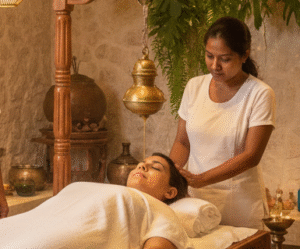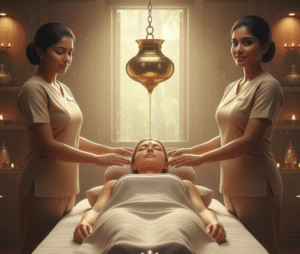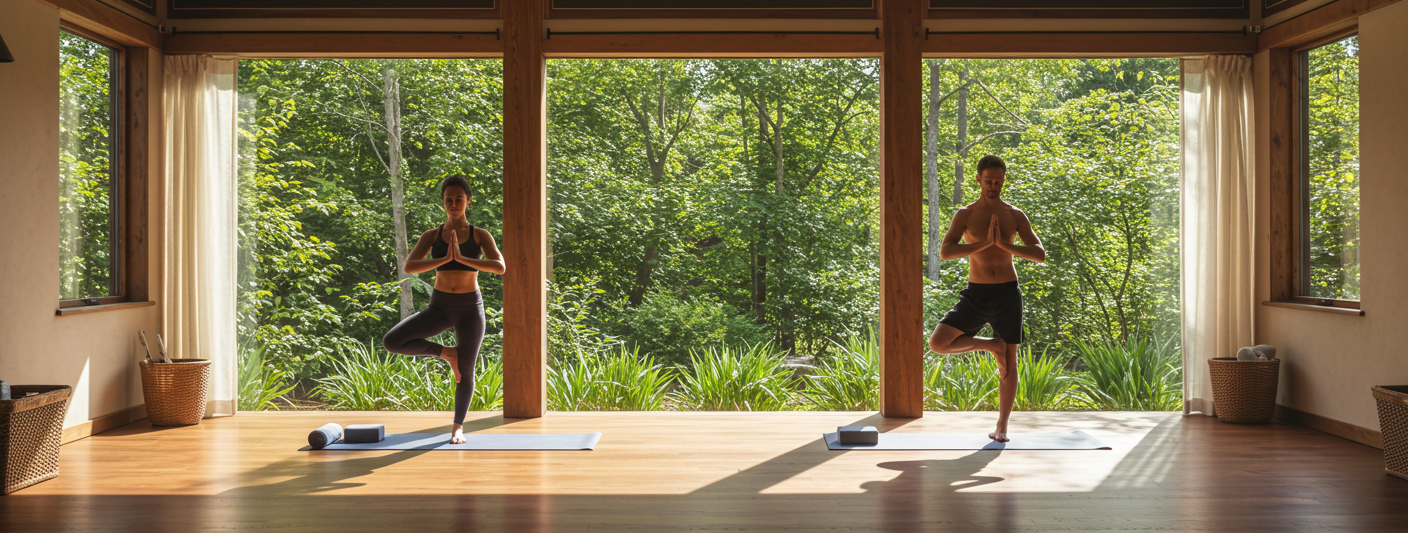Panchakarma
Panchakarma is the classical Ayurvedic detoxification and rejuvenation programme designed to remove accumulated metabolic toxins (āma), re-balance the three doshas (Vāta, Pitta, Kapha), and restore digestion, immunity and vitality. It’s a medically guided course of preparatory care, five main cleansing therapies, and post-therapy rejuvenation tailored to each person.
Simple “How we do Panchakarma” (website friendly)
Consultation & Assessment — Detailed history, pulse/dosha assessment and basic investigations to design a personalised plan.
Purva Karma (Preparatory phase) — Internal oleation (sneha) and external oleation + sweating therapies (svedana) to loosen toxins and prepare the body.
Pradhana Karma (Main cleansing — the “five actions”)
Vamana (therapeutic emesis) — for Kapha-dominant conditions.
Virechana (purgation) — for Pitta-dominant conditions.
Basti (medicated enemas) — mainly for Vata disorders.
Nasya (nasal administration) — clears head and neck channels.
Raktamokshana (bloodletting) — used selectively for certain blood/toxin conditions.
Paschat Karma (Post-care and rejuvenation) — diet, herbs, oil massages (abhyanga) and gradual return to normal activity to build tissue and maintain the benefits.
Key benefits visitors want to see
Deep cleansing of metabolic toxins; improved digestion and metabolism.
Reduced stress and improved sleep when combined with lifestyle guidance.
Better immune resilience, skin improvements, reduced chronic inflammation and improved quality of life in many chronic conditions (reported in clinical case studies).
Important precautions & who should avoid/delay Panchakarma
Panchakarma is powerful and must be personalised. It’s not suitable for: very weak or severely ill patients, early pregnancy, uncontrolled heart disease, active infections, or when a person is on high-dose systemic immunosuppressants without clearance. Mild or modified treatments (shamana) may be advised instead. Always consult both your Ayurvedic doctor and your medical physician if you have serious medical conditions.


Yoga
Yoga is a mind-body practice combining physical postures (āsanas), breath control (prāṇāyāma) and mindfulness/meditation. It improves flexibility, strength and balance and reduces stress by calming the nervous and hormonal stress systems.
Simple “How to do yoga” for website visitors (beginner friendly)
Start gentle — 10–30 minutes daily, focusing on basic postures (Tadasana, Cat-Cow, Downward Dog, Bridge), gentle twists and guided relaxation.
Add breathwork — simple deep diaphragmatic breaths or 4-count in / 6-count out to reduce stress and steady the mind.
Finish with relaxation — 5–10 minutes of Savasana or guided meditation to integrate benefits.
Benefits of Yoga (evidence summary)
Reduces stress and lowers cortisol — yoga down-regulates the HPA axis and sympathetic responses (less stress hormone activity).
Improves mental health — reduces anxiety and depression symptoms and improves mood.
Supports brain health — positive effects on brain regions for memory, emotion and attention.
Good cardiovascular and metabolic effects — can reduce blood pressure, improve heart rate variability and help inflammation markers over time.

